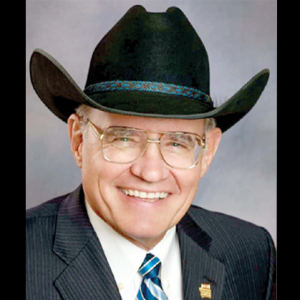Montana Fish, Wildlife and Parks has created a dive team of six Montana Fish Wildlife and Parks employees who focus on controlling aquatic invasive species in the state’s waterways. Besides attempting to physically control AIS in lakes and streams the group also does education, detection and prevention. The team has inspected over 125,000 watercraft during 2020 with over 30 being detected carrying invasive species.
Nomad Global Communications builds specialty vehicles with mobile communication systems to assist rural firefighters and law enforcement. The company has been building these vehicles since 2002 in Columbia Falls. The COVID 19 outbreak has caused the business to focus on vehicles allowing medical personnel to bring their treatment regimes to rural areas and impacted urban areas. Nomad has also responded to the pandemic with adaptations in both its physical design and digital approach. Nomad’s most recent updates include low-touch features and increased software security.
The Ponderosa Chalet at Snow Bear Chalets on Big Mountain has been selected as one of Vrbo’s ( vacation rental by owner) top 25 all-time favorite properties. The online vacation rental business selected 25 properties out of more than 2 million listings worldwide in order to celebrate its 25th year in business. The chalets opened in 2017 as the world’s first ski-in, ski-out tree houses.
A full liquor license and a beer and wine license are available in the Missoula area, according to the Montana Department of Revenue. The floater All-Liquor license is available for a minimum bid of $323,000 in a competitive bidding process, and is not eligible to offer gambling. A beer and wine license that can be located within Missoula or five miles of Missoula is available for a minimum bid of $42,000.
The Downtown Missoula Foundation will offer Heritage Trail Tours and Dinner at one of three fine dining restaurants in downtown Missoula. Offered on Tuesday and Thursday evenings in October, the Heritage Trail Dinner Tours will feature a 90-minute guided walking tour paired with a three-course dinner for $100 per person.
Yellowstone National Park has reported that it had the most-ever September visitors. The increase contrasts sharply with May, when visitation rates were 90% lower compared to the same month last year. The park recorded about 837,000 visits in September, a rate 21% higher than September 2019 and 15.6% higher than the park’s second-busiest September on record in 2018. Visitation rates through June were down 49% compared to numbers from the first six months of 2019. A rapid uptick saw an increase of 2% in visitation rates in July and an uptick in August of 7.5%.The national park’s peak season is typically from May through September. Tourism tends to taper off in September and October. Most lodges, restaurants, stores and other services close for the year in October, followed by all park roads in early November.
The Sky Shed, a ninth-floor rooftop bar and restaurant has opened in downtown Bozeman. with panoramic views of Bozeman. Situated on the roof of what’s now the tallest building in downtown Bozeman, the Sky Shed is essentially a glass restaurant that can be opened to combine the indoor and outdoor seating. Fireplaces dot the patio, surrounded by oversized furniture and tables.
University of Montana researchers have received a $21 million government contract, bringing more support and longevity to what has been a grassroots effort to build a better climate monitoring network across the state. The funding comes from the U.S. Army Corps of Engineers.
Heartland Forward published its annual report, “Most Dynamic Micropolitan Regions,” which ranks 515 micropolitans–regions whose populations range from 10,000 to 50,000–by their economic performance. Bozeman ranked sixth. Pecos, Texas; Jackson, Wyo.-Idaho; and Summit Park, Utah, ranked as the first, second, and third most dynamic micropolitans, respectively. Tourism, energy, and robust entrepreneurship were the most common strengths among the top 30 places. The report offers a view of small cities’ economies heading into the COVID-19 pandemic, indicating which locations may be well positioned to capitalize on a potential exodus from large cities, and which may be most vulnerable to the economic impacts of the crisis.
The Old Faithful Snow Lodge closed 10 days early, October 13, after staff started being diagnosed with COVID-19. Over a dozen cases were reported during the last two weeks, after a summer with only a few cases. Normally the lodge would have closed on October 25.
Developers are planning to build a $19.1 million television and film studio in Missoula. A Montana-based company called Shadowcast Partners, LLC, is planning to purchase the county-owned land in the Missoula Technology Park, to build a large-scale television and film studio.
A Finland study shows that older people today are smarter, stronger and faster than 30 years ago. The study compared the physical and cognitive performance of a group of older people in 2017 with a similarly aged group three decades earlier. Improvements were seen in almost every test, suggesting progress has been made extending the number of healthy years a person lives
The Montana Chamber announced the hiring of Payton Dobbs as the organization’s Membership Relations Coordinator. Payton is responsible for member engagement, retention, and recruitment. Before starting her business selling insurance in 2018, Payton spent five years working in retail where her interest in business and entrepreneurship began.
On Nov. 5, the Bozeman-Yellowstone International Airport will send off their first flight from their new B concourse terminal expansion. The expansion will add four new gates with the more than 75,000 square foot terminal area. The $26.5 million new concourse will have food services and retail options.

